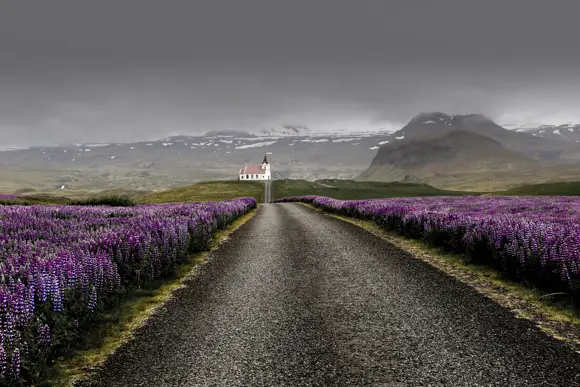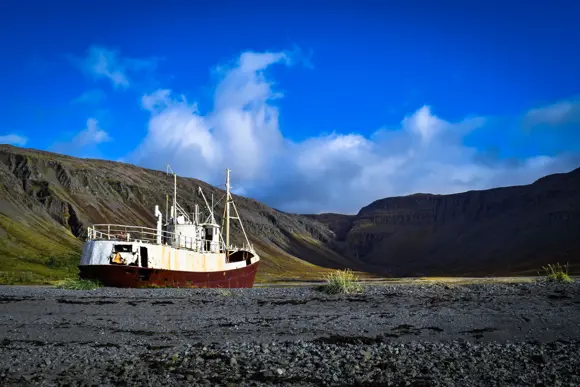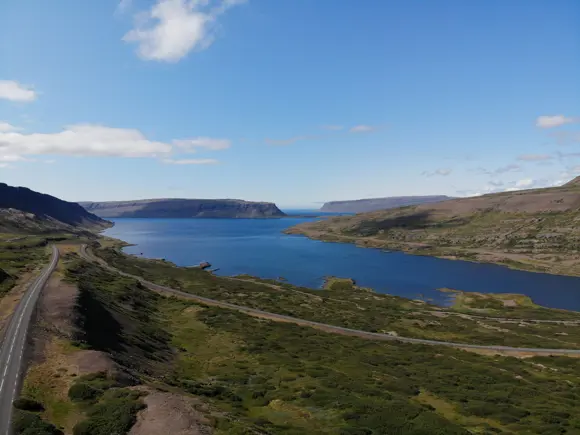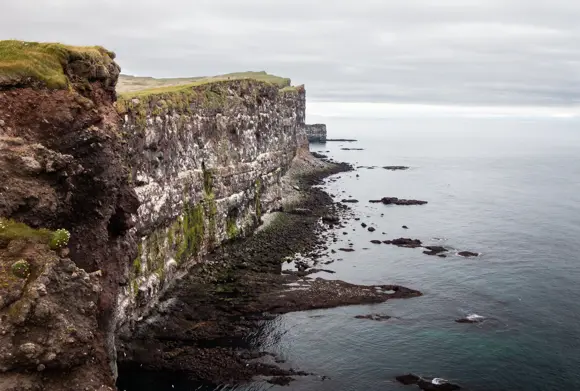The Complete Guide to Iceland’s Westfjords

Tucked away in the Northwest corner of Iceland, you’ll find the remote but spectacular region of the Westfjords, also known as ‘Iceland’s best-kept secret’.
Owing to its isolated location, the vast area is more rarely visited by tourists - in fact, it’s estimated that only around 10% of Iceland’s visitors make the journey to explore the region. This lack of tourists simply adds to the magic of the area, making it a paradise for true explorers.
Getting to the Westfjords
There are several ways you can reach Iceland’s Westfjords including by air, by sea, and by road, depending on your itinerary, budget, and travel preferences.
Driving to the Westfjords can be challenging. You will often be required to navigate gravelly roads that are not as well travelled and not as well maintained as busier routes such as the Ring Road. However, you will be rewarded with stunning scenic landscapes and dramatic mountain passes. The route from Reykjavík can take up to 5 hours, depending on how far north of the north-westerly region you want to visit. It’s worth noting that some of the roads can be impassable during the height of winter when snow and ice make them too dangerous to drive.
By Air
If you’re on a strict itinerary and don’t want to spend hours of your time driving to the wilderness of the Westfjords, a domestic flight from Reykjavík to Ísafjörður may be the ideal solution. Flights typically run daily and take just 45 minutes.
By Sea
If you are keen to combine your journey with a fun leisure trip, it’s possible to take a ferry from the Snæfellsnes Peninsula to the Westfjords. The ferry gives you a well-earned break from being behind the wheel and can get you to your destination in around 2 hours and thirty minutes.

Top Things to Do in the Westfjords
There is no shortage of activities to keep you busy in the Westfjords, where waterfalls, wildlife, geology, and beaches combine to offer an unforgettable trip. You can even explore the Museum of Icelandic Sorcery & Witchcraft or the Arctic Fox Centre for a more educational stop!
Hiking at Dynjandi
Also known as Fjallfoss, Dynjandi is a collection of powerful waterfalls. The hike to the top is short but steep, and in return offers views of the surrounding Arnarfjörður Fjord, as well as the waterfall itself, as the water crashes down the 100m cascade. Amazingly, you may even be able to get close enough to feel the spray on your face (whilst sticking to the designated paths).
Exploring the Drangajökull Glacier
Located near Hornstrandir, a nature reserve in the Westfjords that’s teeming with wildlife, you’ll find Drangajökull - the only glacier in Iceland with an altitude under 1,000 metres. The hike to the glacier typically takes around 3 hours and leads you across glacial mounds, through flowery meadows, and over small creeks of trickling water.
Strolling in the Red Sand at Rauðisandur
In the south of the Westfjords is Rauðisandur, a 10 km stretch of beach where you’ll find that unlike most of the black sand beaches in Iceland, the sand is strikingly red. The red sand contrasts with the cool blue of the ocean to create a stunning coastal setting that is home to many seabirds, as well as Grey and Harbour seals, which can often be spotted by lucky visitors.
Birdwatching at Látrabjarg Cliffs
The Látrabjarg Cliffs are home to an array of bird colonies including the wonderful puffin, that many visitors to Iceland are keen to catch a glimpse of. Between May and August, the cliffs become a hive of nesting activity, offering keen birdwatchers the opportunity to spot various species as they settle down to lay their eggs and feed their young.
Towns and Villages to Visit in the Westfjords
Iceland’s Westfjords are full of boundless beauty.
Ísafjörður
Ísafjörður is one of the biggest towns in the Westfjords and certainly worth a stop during your time there. Rich in history, the town is home to an ancient church site and has been a valuable trading post since the 16th century, if not before! Ísafjörður is a great base for exploring the Westfjords due to its ferry service to Hornstrandir Nature Reserve.
Patreksfjörður
The successful fisheries in Patreksfjörður are the lifeblood of this town, as well as the newly developed tourist industry offering facilities such as a swimming pool, delicious restaurants and cosy hotels. The quaint fjord, which was named after St. Patrick, the patron saint of Ireland, offers scenery galore and true Icelandic character.
Flatey Island
In the beautiful Breiðafjörður Bay, Flatey is technically located between the Westfjords and the Snæfellsnes Peninsula. Popular with wildlife enthusiasts, Flatey boasts a wide range of bird species including eider ducks and arctic terns. It’s important to note that there are no cars allowed on the island, which means the only way in and out is by boat.
Hólmavík
If you’re headed for the Museum of Icelandic Sorcery & Witchcraft, you’ll find yourself in Hólmavík, a large settlement in Strandir. Folklore and sorcery go hand in hand with this town, where “witches” were burnt at the stake many years ago. Hólmavík is also known for whale-watching, as lucky visitors may even get the chance to spot whales feeding just off the shore.
Flatey Island
In the beautiful Breiðafjörður Bay, Flatey is technically located between the Westfjords and the Snæfellsnes Peninsula. Popular with wildlife enthusiasts, Flatey boasts a wide range of bird species including eider ducks and arctic terns. It’s important to note that there are no cars allowed on the island, which means the only way in and out is by boat.
Hólmavík
If you’re headed for the Museum of Icelandic Sorcery & Witchcraft, you’ll find yourself in Hólmavík, a large settlement in Strandir. Folklore and sorcery go hand in hand with this town, where “witches” were burnt at the stake many years ago. Hólmavík is also known for whale-watching, as lucky visitors may even get the chance to spot whales feeding just off the shore.
Flatey Island
In the beautiful Breiðafjörður Bay, Flatey is technically located between the Westfjords and the Snæfellsnes Peninsula. Popular with wildlife enthusiasts, Flatey boasts a wide range of bird species including eider ducks and arctic terns. It’s important to note that there are no cars allowed on the island, which means the only way in and out is by boat.
Hólmavík
If you’re headed for the Museum of Icelandic Sorcery & Witchcraft, you’ll find yourself in Hólmavík, a large settlement in Strandir. Folklore and sorcery go hand in hand with this town, where “witches” were burnt at the stake many years ago. Hólmavík is also known for whale-watching, as lucky visitors may even get the chance to spot whales feeding just off the shore.

Weather in the Westfjords
The unpredictable weather conditions in the Westfjords are much like the rest of Iceland, where it can be cold, sunny, rainy, windy, and snowy all in one day. Daylight hours vary from a whopping 23 in June, when Iceland experiences the phenomenon of the midnight sun, to as little as 3 in December. The coldest month is typically January when the mercury rarely tops 1 degree Celsius.

Culture and History in the Westfjords
First settled by Vikings, the Westfjords region has a rich history of overcoming volcanic ash, famine, and even some epidemics, all thanks to the remote conditions you’ll find there. Produce from the sea has been hugely valuable both as a source of food and income for those living in quaint fishing towns and villages. The population has slowly declined as more and more Icelanders move inland to pursue other careers and escape the solitude that can be felt in such an isolated location.
Accommodation in the Westfjords
With so many things to see and do, The Fosshotel Westfjords offers all the facilities you’ll need to rest and recuperate before, during, and after you explore the peninsula. Conveniently located in the fishing village of Patreksfjörður, you’ll find it simple to access all of the nearby attractions.